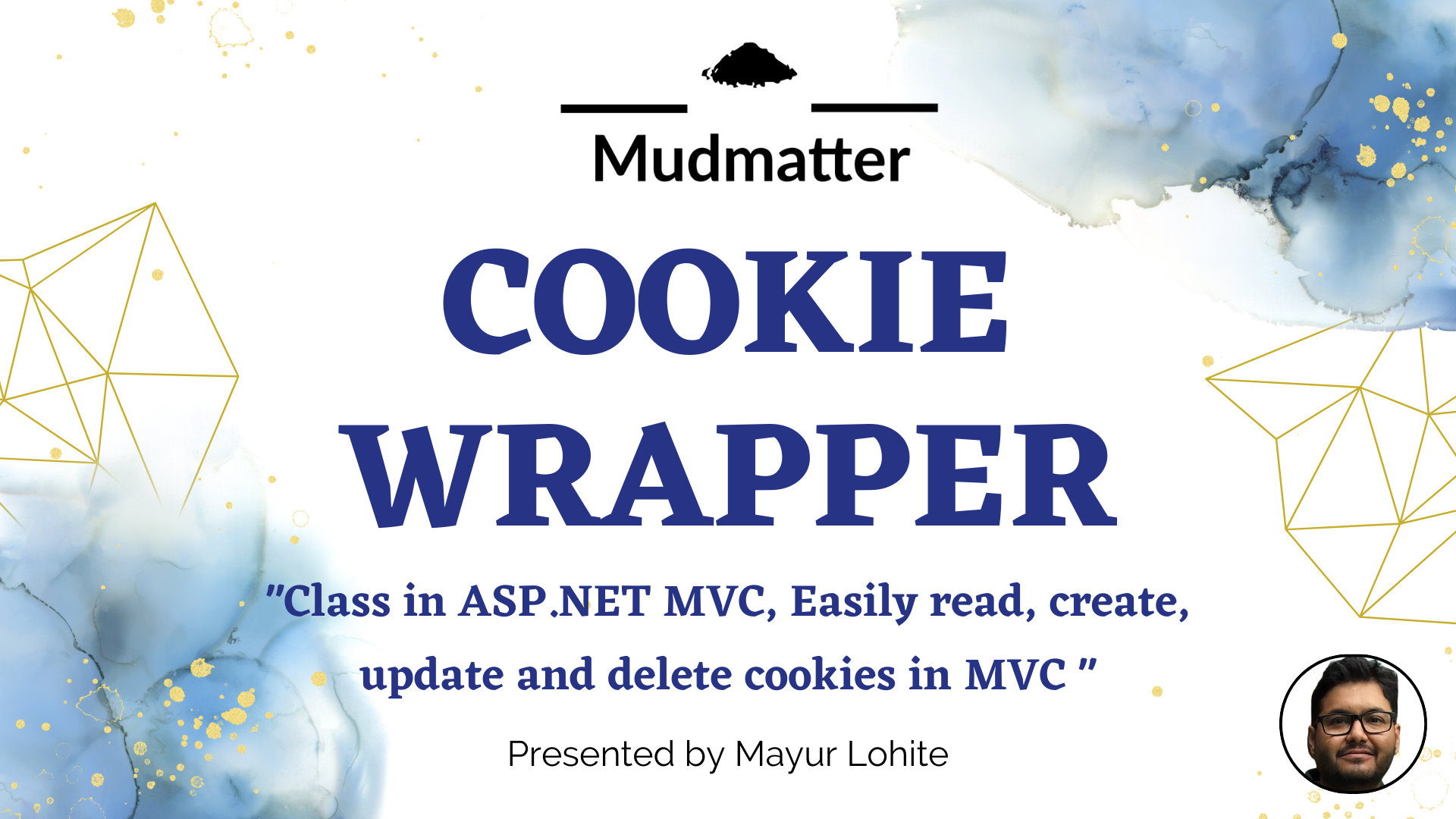Create a CookieHelper class in MVC to easily manage cookies: read, create, update, and delete cookies with a simple and efficient wrapper.
A Simple Cookie Wrapper Class for MVC: Easily Manage Cookies in Your Web Application
In web development, managing cookies efficiently is a crucial part of building user-friendly applications. In this post, I will show you how to create a simple and reusable cookie helper class in MVC, which allows you to easily create, read, update, and delete cookies. This approach simplifies cookie management and ensures your code is clean and easy to maintain.
Introduction to Cookie Management in MVC
Cookies are small pieces of data stored in the user's browser. They are typically used for sessions, preferences, and other user-specific data. In MVC applications, handling cookies manually can be cumbersome. That's where a helper class comes in handy.
Let’s build a CookieHelper.cs class to abstract the common operations like creating, reading, updating, and deleting cookies.
CookieHelper Class Code
Create a new file named CookieHelper.cs and paste the following code into it. This class defines the basic functionality you need for working with cookies in your MVC application.
using System;
using System.Web;
public class CookieHelper
{
#region Constants
// The name of the cookie to be used
public const string CookieName = "UserName";
#endregion
#region Enums
public enum CookieInterval
{
SECOND = 0,
MINUTE = 1,
HOUR = 2,
DAY = 3,
MONTH = 4,
YEAR = 5
};
#endregion
#region Utility Methods
// Calculates the expiration date for the cookie based on the given duration and unit
private static DateTime CalculateCookieExpiry(int duration, CookieInterval durationUnit)
{
DateTime cookieExpire = DateTime.Now;
switch (durationUnit)
{
case CookieInterval.SECOND:
cookieExpire = DateTime.Now.AddSeconds(duration);
break;
case CookieInterval.MINUTE:
cookieExpire = DateTime.Now.AddMinutes(duration);
break;
case CookieInterval.HOUR:
cookieExpire = DateTime.Now.AddHours(duration);
break;
case CookieInterval.DAY:
cookieExpire = DateTime.Now.AddDays(duration);
break;
case CookieInterval.MONTH:
cookieExpire = DateTime.Now.AddMonths(duration);
break;
case CookieInterval.YEAR:
cookieExpire = DateTime.Now.AddYears(duration);
break;
default:
cookieExpire = DateTime.Now.AddDays(duration);
break;
}
return cookieExpire;
}
#endregion
#region Public Methods
// Creates a cookie with a specific name, value, and expiration time
public static string CreateCookie(string cookieName, string cookieValue, CookieInterval durationUnit, int duration)
{
HttpCookie cookie = new HttpCookie(cookieName)
{
Value = cookieValue,
Expires = CalculateCookieExpiry(duration, durationUnit)
};
HttpContext.Current.Response.Cookies.Add(cookie);
return cookieValue;
}
// Reads the value of an existing cookie by its name
public static string ReadCookie(string cookieName)
{
HttpCookie cookie = HttpContext.Current.Request.Cookies[cookieName];
return cookie?.Value ?? string.Empty;
}
// Updates the value and expiration of an existing cookie
public static string UpdateCookie(string cookieName, string newCookieValue, CookieInterval durationUnit, int duration)
{
HttpCookie cookie = HttpContext.Current.Request.Cookies[cookieName];
if (cookie != null)
{
cookie.Value = newCookieValue;
cookie.Expires = CalculateCookieExpiry(duration, durationUnit);
HttpContext.Current.Response.Cookies.Add(cookie);
}
return newCookieValue;
}
// Deletes a cookie by setting its expiration date to the past
public static void DeleteCookie(string cookieName)
{
HttpCookie cookie = new HttpCookie(cookieName)
{
Expires = DateTime.Now.AddDays(-1)
};
HttpContext.Current.Response.Cookies.Add(cookie);
}
#endregion
}
How to Use the CookieHelper Class
Now that you have the CookieHelper class, let's walk through some common scenarios: creating, reading, updating, and deleting cookies.
1. Create a Cookie
To create a cookie, you simply call the CreateCookie method with the cookie's name, value, duration unit (such as days or months), and duration:
string cookieValue = CookieHelper.CreateCookie(CookieHelper.CookieName, "This is a test cookie", CookieHelper.CookieInterval.DAY, 7);
This will create a cookie that expires in 7 days.
2. Read a Cookie
To read the value of an existing cookie, use the ReadCookie method:
string cookieValue = CookieHelper.ReadCookie(CookieHelper.CookieName);
If the cookie exists, this will return its value. If it doesn't, it will return an empty string.
3. Update a Cookie
To update the value of an existing cookie, call the UpdateCookie method:
string updatedCookieValue = CookieHelper.UpdateCookie(CookieHelper.CookieName, "Updated cookie value", CookieHelper.CookieInterval.DAY, 14);
This will update the cookie's value and reset its expiration date to 14 days from now.
4. Delete a Cookie
To delete a cookie, use the DeleteCookie method:
CookieHelper.DeleteCookie(CookieHelper.CookieName);
This will remove the cookie by setting its expiration date to a past date, effectively deleting it from the user's browser.
Conclusion
With this simple CookieHelper class, you can easily manage cookies in your MVC applications. Whether you're creating, reading, updating, or deleting cookies, the code is clean and easy to use.
Feel free to use this class in your project, and let me know your thoughts or any improvements you might suggest!
Notice Inappropriate?
If you come across any inappropriate content, please report it to our administrators!





